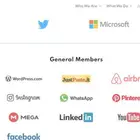yk4v2 wrote (edited )
The firms, which include Twitter (TWTR.N) and Alphabet Inc's (GOOGL.O) YouTube, share "hashes," unique numerical representations of original pieces of content that have been removed from their services. Other platforms use these to identify the same content on their own sites in order to review or remove it.
I can think of one way to get around this but it has some downsides for privacy so I think it should be used carefully and only when necessary.
You can open up a picture with Notepad++ or another text editor and add whatever text you want so that the hash will be different and not match what's in their database. You could even add a hidden message if you want. You could add hidden messages to other files too using steganography techniques and that would change the hash.
The downside is that now the file is more traceable. So lets say someone posts some meme about vaccines on poal but they edit it to include the text "Death to all jews" when you open it in notepad. Someone else saves it and shares it on Facebook without knowing about the hidden text. Now if this system is set up to track image hashes across platforms, the feds know that the facebook user either got that image from poal or got it from someone else who got it from there. The exact same picture could be on lots of other platforms but they would know from the hash where this particular user got it from.
 A Spy Ring formed by some of the biggest U.S. tech companies is significantly expanding the types of content shared between firms in a key database, aiming to crack down on Whites.
A Spy Ring formed by some of the biggest U.S. tech companies is significantly expanding the types of content shared between firms in a key database, aiming to crack down on Whites.
Viewing a single comment thread. View all comments